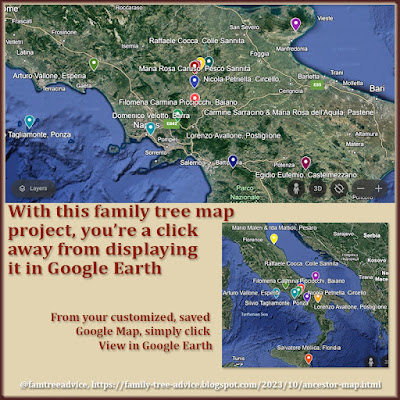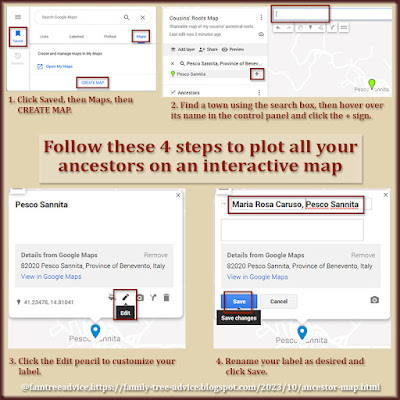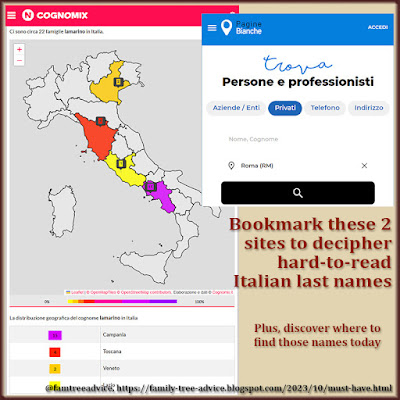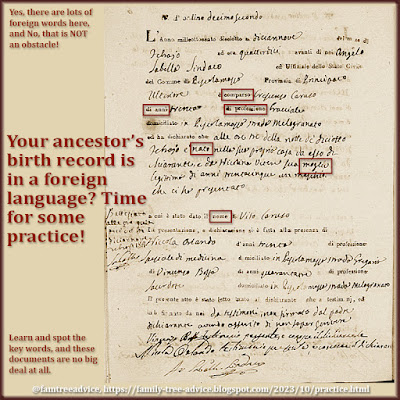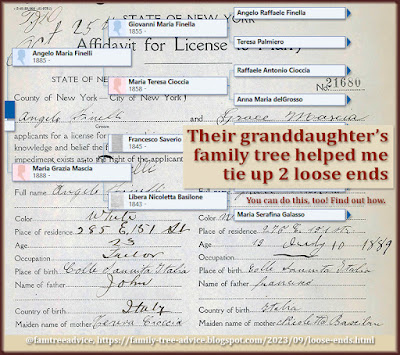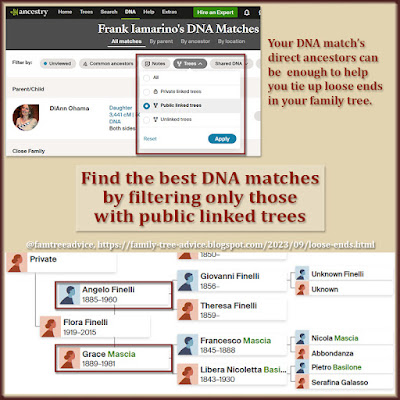I haven't visited my ancestral hometowns since 2018, and I'm really starting to miss them. I'd love to walk the streets again, linger longer, and talk to more of the villagers.
Then a great idea fell into my lap. I wanted to find some information about a town I haven't visited yet. My 3rd great grandmother Rufina's hometown is Apice, and it's now a ghost town. An earthquake in the 1980s made the whole town too dangerous to live in. They call the deserted part of town Apice Vecchio (vecchio means old). Today everyone lives nearby in the very modern-looking Apice Nuovo (nuovo means new).
Among my search results were articles and videos about the ghost town. I saw a suggested video posted by another of my ancestral hometowns: Pesco Sannita.
What's this? My great grandmother's town has a YouTube channel? I watched an English-subtitled video about agriculture in my great grandmother's hometown. I'll be sure to look for the vineyards and olive tree groves on my next visit.
I watched another video about the Fiume Tammaro. I found this river (fiume) mentioned on 6 Pesco Sannita death records from the 1840s and 1850s. Young boys kept drowning there. Seeing the video, it seems too shallow and slow-moving to have taken the boys' lives. Even more surprising is that some women still wash their laundry in the river.
The town's YouTube videos include:
- beautiful fly-overs filmed by drones
- cultural events
- demonstrations by a local chef
- a look inside their restaurants, and more.
What else can I find from my ancestral hometowns? Searching for my grandfather's town of Baselice, I found:
- more drone fly-overs
- promotional videos for the town
- a description of a public works beautification project.
I'm a big fan of the drone fly-over videos (many created by Raffaele Pilla). I spotted my grandfather's house in one of them!
 |
| You can fly over, walk through, and learn the culture of your ancestral hometowns right on YouTube. |
For my other grandfather's town, Colle Sannita, I found messages from the mayor and town council meetings. For my great grandparents hometown of Sant'Angelo a Cupolo, I found a fly-over video and a first-person view of a foot race through town. Even the real estate videos are great because they give me a view inside the homes. That's something I can't see while walking through my towns.
I also watched video tours of the city of Benevento. It's the center of all my ancestral hometowns, and I have 2 cousins who own restaurants there. I've been to Benevento 3 times and still haven't seen all the sights.
Search for videos from your ancestral hometowns by typing the name of the town in the YouTube search box. Be sure to use the correct in-country spelling of the town name. Pay attention to who is posting the videos you like. They may have more videos for you in their collections.
Be sure to hover over the video and click CC (closed captioning) to see subtitles. If they aren't in English, click the gear next to CC, click Subtitles, Auto-Generate, and choose your language. The translations may not have the best quality, so keep an open mind. If you can't click the CC, the video may have no spoken words.
While I was at it, I searched YouTube for my current hometown in New York. I found some interesting videos about the town's railroad history. Then I found videos about the little town of Hornellsville, NY, where my grandmother was born. If you haven't used YouTube to give your genealogy research some context, you should give it a try.
And speaking of your ancestral hometowns:
